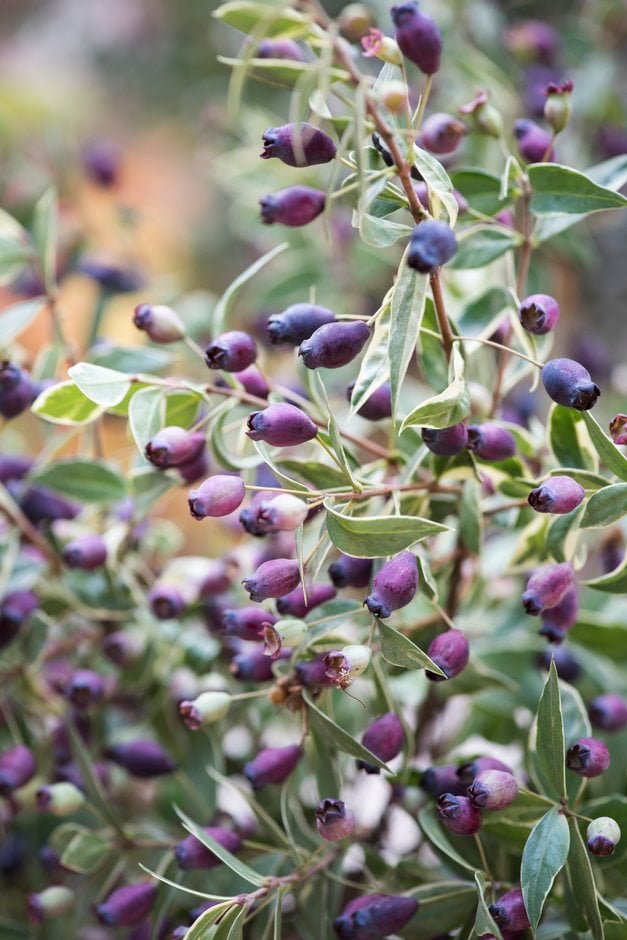Myrtus communis 'Variegata' (v)
myrtle 'Variegata'
A bushy, medium-sized, evergreen shrub with small, aromatic, dark green leaves with a neat, cream border. Scented white flowers, 2cm in width, appear from mid- to late summer into autumn, followed by purplish-black berries
Size
Ultimate height
1.5–2.5 metresTime to ultimate height
10–20 yearsUltimate spread
1.5–2.5 metresGrowing conditions
Moisture
Moist but well–drainedpH
Acid, Alkaline, NeutralColour & scent
| Stem | Flower | Foliage | Fruit | |
| Spring | Cream Green Variegated | |||
|---|---|---|---|---|
| Summer | White | Cream Green Variegated | ||
| Autumn | White | Cream Green Variegated | Black Purple | |
| Winter | Cream Green Variegated |
Position
- Full sun
Aspect
South–facing or West–facing
Exposure
Sheltered Hardiness
H4Botanical details
- Family
- Myrtaceae
- Native to GB / Ireland
- No
- Foliage
- Evergreen
- Habit
- Bushy
- Genus
Myrtus are evergreen shrubs or small trees with aromatic, leathery leaves and solitary, bowl-shaped white flowers followed by fleshy, often edible berries
- Name status
Accepted
How to grow
Cultivation
Grow in moist but well-drained soil, sheltered from cold, dry winds. Requires a long, hot summer to produce flowers and fruits
Propagation
Propagate by semi-hardwood cuttings
Suggested planting locations and garden types
- City and courtyard gardens
- Coastal
- Cottage and informal garden
- Mediterranean climate plants
- Patio and container plants
- Low Maintenance
- Garden edging
- Flower borders and beds
- Hedging and screens
- Wall side borders
Pruning
Pests
Generally pest-free
Diseases
May be susceptible to honey fungus (rarely)
Get involved
The Royal Horticultural Society is the UK’s leading gardening charity. We aim to enrich everyone’s life through plants, and make the UK a greener and more beautiful place.
